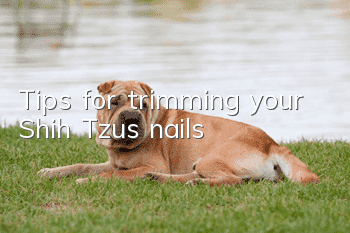What is the daily feeding method for Bull Terrier?

Bull Terriers are born with an active temperament and are extremely excited. Individual dogs may be aggressive after artificial training. They never give in among dogs and even hurt other dogs. But compared to humans, Bull Terriers are relatively docile, smart and obedient. Is the Bull Terrier easy to raise? What is the daily feeding method of the Bull Terrier? The knowledge points of these two questions are necessary for breeders. If you want to understand clearly, you might as well follow the editor to learn more!
Are Bull Terriers easy to raise?
Bull Terriers are actually not that scary, and they are easy to raise, because each bull has a different temperament. This is related to the quality of the bull, the environment in which it grew up when it was young, and the feeding situation of the owner. Generally, females are docile than males. Some are more naughty under 1 year old. For puppies who have just arrived in a new home for a day or two, everything is full of confusion, chaos, and quite stressful. The owner should try to make it as easy as possible. All friends and family will definitely want to meet this adorable new member of your family as soon as possible, but you should try to decline such requests until the puppy has spent the first few days of its most sensitive life. At the same time, in the first few days, continue to feed the same food as before at the same feeding time to reduce the gastrointestinal discomfort that may be caused to the puppy due to environmental stress.
What is the daily feeding method for Bull Terrier?
1. Diet management of Bull Terrier:
Bull Terrier puppies have a huge appetite and eat very quickly. If it slows down in eating, you need to pay more attention to see if it is sick. If it doesn't finish the meal within a few minutes, put the meal away and take it out when it eats next time to make it feel that the meal is not lost.
Precautions for Bull Terrier diet management: If the Bull Terrier is healthy but has no appetite, it is generally fed too much and the feeding amount should be appropriately reduced. The amount is appropriate if the Bull Terrier is not obese. Pay attention to a balanced diet and generally do not need to supplement with additional nutrients.
Currently, Bull Terriers have not been found to have any adverse reactions to certain foods. Bull Terriers prefer fruity and sweet foods and should be given in moderation. The Bull Terrier's jaws are more powerful than those of other dogs, capable of tearing and swallowing the hardest bones. Despite this, we still do not recommend feeding it bones for the same reason as for other dogs. The bone residue may scratch its digestive tract and cause bleeding. If it is used for teeth grinding, it is best to choose a professional and strong dog chew.
2. Bull Terrier’s living environment:
Although born in the United Kingdom, the Bull Terrier does not like cold and humid climates. A warm and dry environment will make him very happy. However, it should be noted that white Bull Terriers should avoid excessive exposure to the hot sun in summer to avoid burning the skin.
Precautions for the Bull Terrier’s living environment: If it is kept outdoors, the kennel should be a certain distance from the ground to keep it dry and resist pest infestation.
3. Bull Terrier exercise:
The Bull Terrier itself is very energetic and needs a lot of exercise. It is best to take a walk twice a day for 30 minutes each time, play games, and have fun. The lifespan of a Bull Terrier is 11-14 years, and it does not fully develop until it is one and a half to two years old. Bull Terriers around one year old may suddenly become lame. Don't panic, this is caused by the Bull Terrier gaining weight too quickly but its muscles have not matured accordingly.
Precautions for Bull Terrier exercise: Transitional movements, hard jumping, sudden stops or turns during fast running can cause injuries to underdeveloped joints and ligaments. Therefore, excessive exercise should be avoided before the Bull Terrier matures.
4. Bull Terrier bathing:
Under normal circumstances, a bath every two weeks to a month is enough. When taking a bath, be sure to rinse away all the bath liquid with clean water, because the residual bath liquid may cause skin allergies in your Bull Terrier.
Precautions for bathing your Bull Terrier: It is particularly important to note that you should never use human soap, soap or bath liquid to bathe your Bull Terrier. These products are too strong for the Bull Terrier’s delicate skin, and they will break down the protective layer of the skin. of waterproof oil.
5. Cleaning of Bull Terrier ears
Cleaning the Bull Terrier’s ears is very necessary and can be done regularly during daily care. However, it should be noted that only the superficial layer of the ear socket is to be cleaned. Avoid inserting cotton swabs deep into the ear socket to avoid damaging the hearing. Likewise, ear cleaning solutions should not be poured deep into the ear canal; they should only be used on the visible parts of the outer ear.
Precautions for cleaning the ears of the Bull Terrier: If the Bull Terrier often scratches his ears nervously, it is likely that there are parasites in his ears. If you smell a unique odor in his ears, you should go to the hospital for treatment.
Dear friends, you all know that Bull Terriers are easy to raise and the daily care of raising them. Have you learned it? If you want to raise it better, you may wish to refer to the relevant content provided by the editor.
- How to care for Samoyed's hair to become smooth and shiny?
- What skin diseases do dogs have? How to treat dog skin diseases!
- What should I do if my injured dog likes to lick its wounds?
- Adverse reactions after vaccination in dogs
- What’s the best way to treat alopecia areata and hair loss in dogs?
- Symptoms and treatment of Samoyed toe inflammation
- How to prevent pets from damaging furniture?
- What should I do if my poodle has depression?
- How does a novice choose a Schnauzer puppy?
- How much does a Bull Terrier cost and is it easy to raise? Bull Terrier pictures | price | training



